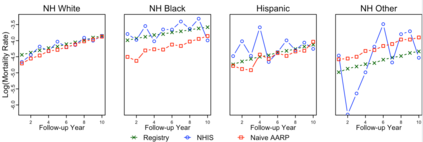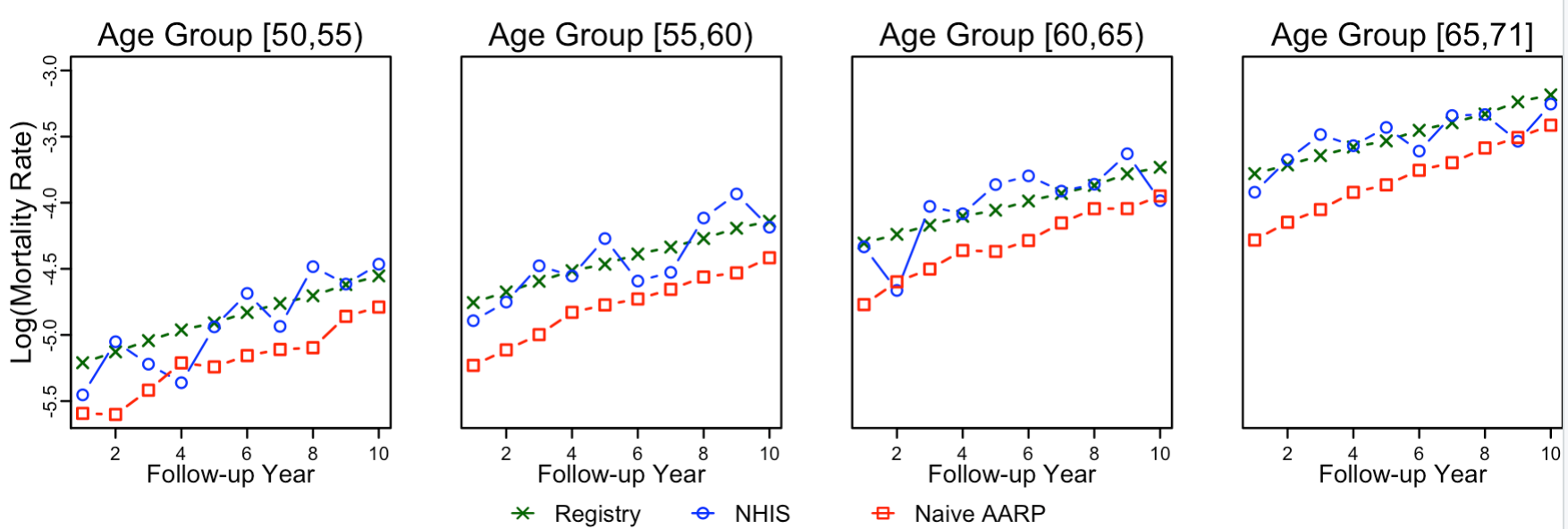Absolute risks are fundamental to clinical decision-making but are often estimated from non-representative epidemiologic studies, which usually underrepresent minorities. "Model-based" methods use population registries to improve externally validity of absolute risk estimation but assume hazard ratios (HR) are transportable between data sources. "Pseudoweighting" methods improve representativeness of studies by using and external probability-based survey as the reference, but the resulting estimators can be biased due to propensity model misspecification or inefficient due to variable pseudoweights or small sample sizes of minorities in the cohort and/or survey. We propose a two-step pseudoweighting procedure that poststratifies the event rates among age/race/sex strata in the pseudoweighted cohort to the population rates to produce efficient and robust absolute risk estimation. For developing an all-cause mortality risk model representative for the US, our findings suggest that HRs for minorities are not transportable, and that surveys can have inadequate numbers of events for minorities. Poststratification on event rates is crucial for obtaining reliable estimates for minority subgroups.
翻译:绝对风险是临床决策的根本,但往往是由非代表性的流行病学研究估计的,这些研究通常不具有少数群体的存在。 “基于模式”的方法使用人口登记册来提高绝对风险估计的外部有效性,但承担危险比率(HR)在数据来源之间是可以迁移的。 “超量加权”方法通过使用和外部概率调查作为参考,提高了研究的代表性,但由此产生的估计者可能会由于群体和(或)调查中少数群体的变异伪重量或小样本规模的偏差或效率低下而产生偏差。我们建议采用两步假加权程序,将伪加权组群中年龄/种族/性别群体中的事件率推向人口比率,以产生有效和有力的绝对风险估计。为了为美国开发一个全因死亡风险模型,我们的研究结果表明,少数群体的人力资源是不可迁移的,而调查可能使少数群体的事件数量不足。对事件率的确认对于获得少数群体分组的可靠估计至关重要。






